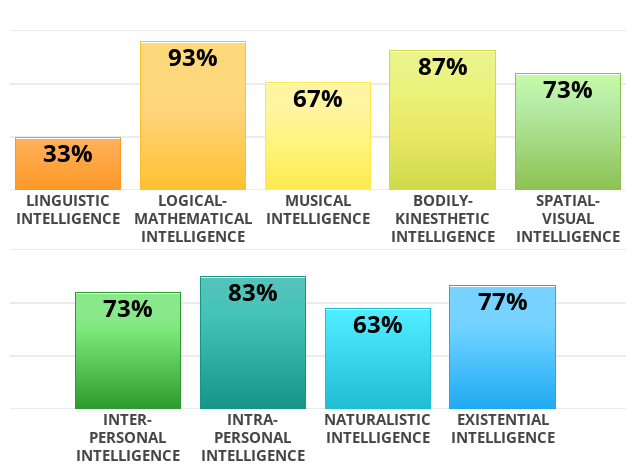Types of leaders
Leaders come in many forms and have different beliefs, values, and cultures. This post breaks down some of the high-level differences among leaders and highlights what one should be aware of in a leadership role.
It is based on the Coursera course: https://www.coursera.org/learn/leadership-collaboration
Leadership development
Nature versus nurture
Are leaders made or born?
There are two dominant theories of leadership: entity theory, also known as trait theory and incremental theory.
Entity theory argues that leadership is a trait, that one is born with. Incremental theory argues that one can learn to be a leader. I personally subscribe to the incremental theory of leadership. One can be born with certain traits that make one more naturally inclined to become a leader, but leadership skills can be grown and developed through hard work.
Mindset and growth
Do you have a growth or fixed mindset? Do you believe that you can change who you are and improve your skills with work and practice or do you believe that you are who you are and anything you are good or bad at must stay that way? That is the difference between a fixed and growth mindset.
Growth mindsets are much more successful long term and should be nurtured in yourself and others. People with fixed mindsets don't like trying new things because the risk of failure implies that they aren't good enough. In contrast, people who have a growth mindset, see themselves and others as having potential. New things present an opportunity to learn and grow.
Have a growth mindset!
Leadership styles
There are two main theories of leadership styles. Theory X leadership and Theory Y leadership.
Theory X leadership is mostly transactional. You do something and I'll give you a reward at the end, like a carrot dangling in front of a rabbit.
Theory Y leadership is based upon the idea that people want to contribute and do excellent work.
In my view, one needs to combine these leadership styles. People should be sufficiently rewarded monetarily, especially when they are contributing significantly to your own or the company's profits. However, the reward should not be the thing that motivates them to work for you. The reward should be a by-product of the intrinsic motivation to do something useful and meaningful.
Motivation, emotion, and cognition
Intrinsic and extrinsic motivation
Are you intrinsically or extrinsically motivated? What about your colleagues?
Often people believe that they themselves are intrinsically motivated and believe that others are extrinsically motivated. This obviously makes no sense, as why would most people believe that others are motivated by money, while themselves having some other internal motivation for what they do.
It is important to nurture and develop the intrinsic motivation in your colleagues and subordinates. You will get far better work from them.
Happiness
You are either a happy person or not, right? Well, not exactly. According to some rough estimates about 50% of your happiness comes from your genetics, 40% from your intentional activities and 10% from material wealth.
You could take a few views from this:
- If you are born an unhappy person that you are cursed for life.
- If you consciously work on some practices, you can make yourself happy.
- Without the other things, money can't buy you happiness, but it can certainly help.
Let's focus on the 40%. Few people are born with no intrinsic reason to be happy and if the 40% of intentional activity can be controlled, there is a good chance of being happy overall. Focus on behaviours and practices that we do voluntarily such as helping others, adopting a positive view, exercise and have goals you can work towards.
Decision making
Most people believe that they are good decision makers. They are overconfident in their decision-making prowess. This leads to bias in the decision-making process. Let's discuss a few of these biases and how to overcome them.
- The framing effect - The tendency for us to be risk-adverse regarding positive outcomes and risk taking regarding negative outcomes.
- Confirmation bias - The tendency to actively seek out information that confirms your pre-existing viewpoint.
- Decision fatigue - Making too many decisions, including insignificant decisions causes us to make poorer decisions when it really matters.
- Team scaling fallacy - That by adding members to your team, you can solve the problem with linearly increasing efficiency.
- Common information effect - The tendency for people in team to talk about the things that they all know, and not the things that they individually know which would add value.
Wherever you are working, it is important to be aware of these biases and work together to not fall prey to their effects.
People skills
Emotional intelligence
Think of your best boss. What characteristics stand out?
The things that stand out are likely not that they are intelligent, or that they had excellent grades at school. You probably thought about their people skills. Leaders are judged, not only on how clever they are, but also how they handle themselves and other people.
The skill related to understanding yourself, and others is known as emotional intelligence.
What are the implications for leadership? Emotional intelligence starts with self-awareness. People who are high in self-awareness are more empathic. You can improve your ability to self-regulate with rehearsal and practice and being more self-aware allows you to have more understanding for others.
Organisational intelligence
People who span organisational divides and integrate knowledge and best practices around the organisation are much more useful than people that work in silos.
They connect people and ideas.
You want to have a network that is large and spans many areas of knowledge within your company to maximise value. This is known as organisational intelligence. Good leaders encourage this interconnected behaviour and themselves have good relationships across the organisation.
Cultural intelligence
Cultural intelligence is a person's capability to adapt effectively to new cultural contexts.
The risk of talking about culture is that we may falsely stereotype people. A stereotype is a faulty belief that everyone from a given group or given culture is the same.
In general cultures across the globe can be defined into three main groups: face, honour, and dignity. It is important to be aware of other people's cultures and identify the overarching traits of theirs.
Face cultures are primarily East Asia. People from face cultures derive their self-worth from earning the respect of others.
Dignity cultures are primarily Europe North America, Australia, and New Zealand. People who embody the dignity culture believe strongly in speaking their mind and being self-reliant.
Honour cultures are primarily in the Middle East, South Asia, North Africa, and Latin America. Self-worth in honour cultures is socially claimed.
The multiple intelligences test
Howard Gardner's theory of multiple intelligences challenges the traditional view that intelligence is a unitary capacity. Gardner proposes that there are at least eight intelligences that can be identified, and they influence how we learn, think, and interact.
Your leadership style is influenced by your own multiple intelligences. Gaining self-awareness of your own multiple intelligences can help you motivate and influence others more effectively.
You can do the Multiple Intelligence Survey yourself and read more about the The Components of Multiple Intelligences.
Here are my results.

The results show that my top three intelligences are logical-mathematical, bodily-kinaesthetic, and intra-personal. My weaknesses are linguistic and naturalistic.
It comes as no surprise that my top intelligence is logical-mathematical because of my role as a data scientist and engineer. In these roles it is critical to be able to formulate logical thoughts and understand complicated problems.
The next intelligence is the bodily-kinaesthetic. This is a strength for me as I have always participated in a variety of sports and been active. Learning new skills that require co-ordination and body-awareness come relatively easily.
The third intelligence is intra-personal. This involves self-reflection and an ability to learn from one's mistakes. I often review my actions and thoughts after events and figure out how different situations could be handled better in the future.
Getting to the weaknesses, by far my weakest area is linguistic intelligence. Writing, speaking, and learning languages doesn't come naturally to me. This requires work, and currently I am learning German. Based upon these results, I should invest more time writing, and working with language as effective communication is essential when working with others. One of the ways I intend to work on this intelligence is by writing for my blog. Over time, writing should become easier and more fun.
The next intelligence that I want to work on is my naturalistic intelligence. I enjoy being in nature, and spending time outdoors. I however don't learn much about various plants and animals and often just ignore any information that comes my way. To improve this, I should pay more attention to the details and try to learn and remember information to do with nature.
Working on these two intelligences will help my professional career, by improving communication and information sharing. They will help me become more aware of my surroundings and notice intricate details around me.
Conclusion
If you made it this far, thanks for reading! I learnt a lot writing this post and found out where my strengths and weaknesses lie. Try out the exercise for yourself and come up with a plan to work on your own weaknesses and leverage your strengths in whatever environment you are currently working.
